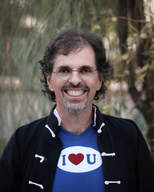|
Since earliest childhood, I have been drawn to experiences in which I lose myself. This is not poetic license; I mean it literally. For extended periods of time, I disappear. I am not aware of any thought—not even a thought of myself. My sense of time vanishes. Nothing is lacking. I have no concern about hunger, thirst, hot or cold. All I know is the pure feeling and sensation of the present moment. The experience is luscious and joyful. There is nothing traumatic or frightening about it. I learned early that when I lose myself, I gain everything. The entire universe opens up to me at these moments. Here is where I find my connection to spirituality, fulfillment, and creativity. 
So, how do you lose yourself in this kind of experience? It all starts with emptying the mind. You can do this through concentrative meditation techniques, which have you focus your attention on one thing. This could be a visual stimulus (mandala), sound (mantra), physical pose (asana), or gesture (mudra). If you focus on one thing long enough, your mind goes blank. For me, chanting is an especially powerful tool for this.
In Deep Creativity, I draw the analogy between concentrative techniques and an obscure visual phenomenon called retinal image stabilization. The natural tendency of the eye is to jump from one image to the next in a series of movements called saccades. In the 1960s, researchers discovered that if you stabilize a retinal image, meaning that you hold it perfectly still relative to the eye, it eventually disappears from view.
Similarly, most of the time your mind jumps from thought to thought, like a monkey swinging from one branch to the next. If you hold a single thought in mind long enough, the mind shuts off. You are disrupting your stream of thought just long enough to find that delicious silence which lies in the space between thoughts. And where there is no thought, there is no YOU. That is because your self-concept is just a thought, made up of other thoughts. So, when you silence your mind, you lose yourself.
Most people who learn concentrative meditation techniques struggle to master them. A far easier way to go is to immerse yourself in play. Of course, it has to be the right kind of play. In The Way of Play, I recommend play activities that are simple and non-competitive, requiring no strategy and little effort. You will find a list of 108 such activities inThe Way of Play, including walking in nature and soaking in a warm bath.
So, here is how you can lose yourself in the moment:
As a kid, you probably knew how to savor the moment while immersing yourself fully in play. But as an adult, you may have forgotten what that feels like. You might be preoccupied with all kinds of worries and concerns. Your responsibilities and to-do list may seem so urgent that they demand your constant attention. But in truth, these things are not as important as they seem. And taking a break from them—even for only a few minutes—will let you come back to them with a fresh perspective and renewed energy. You don’t have to learn how to lose yourself. It’s more a matter of remembering--and making it a priority in your daily routine. When you lose yourself in play, you gain everything.
0 Comments
Leave a Reply. |
I want to hear from you! Please share your questions and comments. And sign up for my newsletter, where I will pass along the insights, ideas, and inspiration that come my way.
Contact me:Archives
November 2023
|




 RSS Feed
RSS Feed
